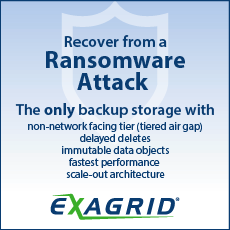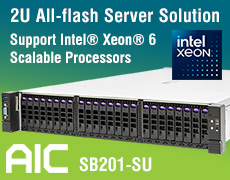University of New Hampshire Installs Sepaton’s VTL and De-Dup
To replace tapes
This is a Press Release edited by StorageNewsletter.com on August 7, 2008 at 3:26 pmSEPATON, Inc. announced that the University of New Hampshire will deploy SEPATON’s S2100-ES2 virtual tape library (VTL) and DeltaStor software for data deduplication as a key part of a consolidation effort combining two separate backup and recovery environments into one newly architected disk-based storage infrastructure.
![]()
“By creating a single disk-based backup environment that will scale in capacity and performance to support the administrative and academic operations of the University we will gain economies of scale and efficiencies that we want to leverage. It also provides a path to move away from physical tape as the primary backup medium,” said Bob Rader, storage and backup manager for the University of New Hampshire. “But in order to justify replacing tape with disk, disk-based backup costs had to be reduced to compete with tape. Data deduplication with hardware compression became critical technology in our evaluation to solve the cost/capacity metric we needed to meet for disk-based storage.”
UNH plans a phased approach to deployment in order to defray costs so the new system had to offer the flexibility to add capacity and performance easily and without disruption. The team also required a system that could replicate data from one data center to another to meet this future data disaster recovery planning objective.
The Evaluation and Selection
UNH’s IT team wanted a well-integrated VTL with data deduplication and hardware compression. Performance requirements were set at a sustained backup throughput of at least 350 MB/second today, with the ability to scale performance to 600 MB/second to accommodate future expansion within current backup windows. To protect the large Oracle databases they use to store critical administrative data, the University set a minimum required throughput for any individual restore request at 200 GB/hour or roughly 60 MB/second and the ability to scale to 100 MB/second when needed. The chosen solution also needed to connect seamlessly to the University’s common SAN and Symantec NetBackup software.
Rader said: “We looked at many vendors with various dedupe approaches and SEPATON offered a cleaner, simpler configuration that was better integrated than alternatives. With the ContentAware architecture, we can add performance simply by adding more SEPATON replication engine (SRE) nodes and add capacity simply by adding disks. This is a smarter design that enables the system to grow easily. Their deduplication method seemed to ensure backups would process without slowing performance and sure enough, our ‘stress-testing’ showed that despite all the data we could throw at it, DeltaStor passed with flying colors.”
The Implementation and Testing
The University purchased an S2100-ES2 with one SRE node containing four disk shelves with 30 TB of usable space, along with a 20 TB DeltaStor software configuration. It took only a half day to get the system out of its crate, into a rack and performing backups.
“Our dedupe ratio requirements are conservative because our primary goal is simply to beat the cost of tape,” explained Rader. “But, as our initial testing shows, we fully expect to achieve ratios that exceed our goals, realizing capacity gains and costs savings for the University. The performance of the system has been excellent, as has its usability. The browser interface makes configuring the system very easy. As soon as our backup infrastructure with new servers and devices is operational, we’ll be ready to fine tune deduplication for optimal performance in our environment.”
“The University of New Hampshire has developed a practical approach to introducing data deduplication into its environment,” said Asim Zaheer, vice president of marketing, SEPATON, Inc. “Game-changing technologies, even those that are non-disruptive, should be implemented using best practices methodologies. We are excited to work with UNH and look forward to helping them launch their new disk-based backup and recovery environment.”













 Subscribe to our free daily newsletter
Subscribe to our free daily newsletter

